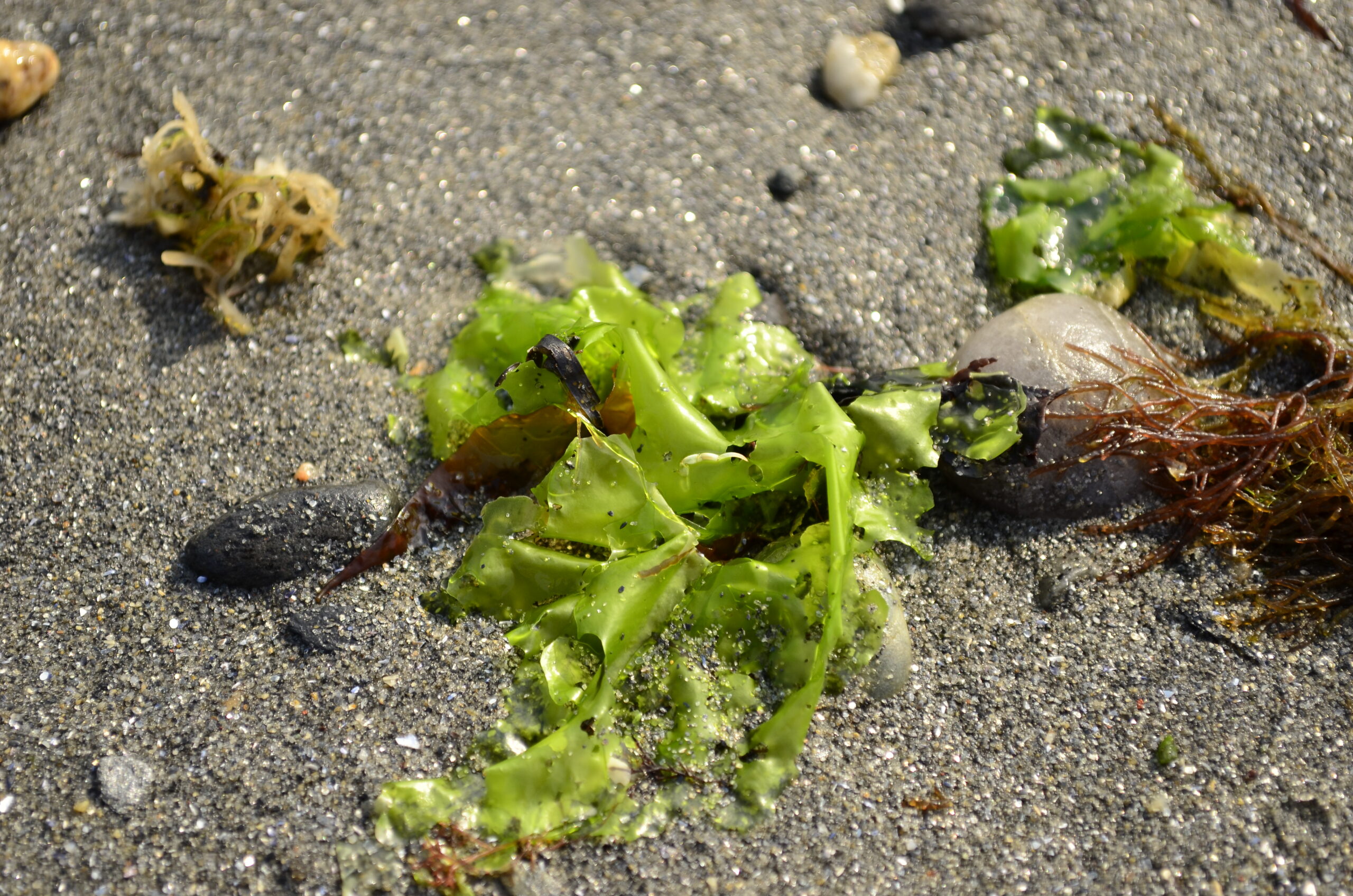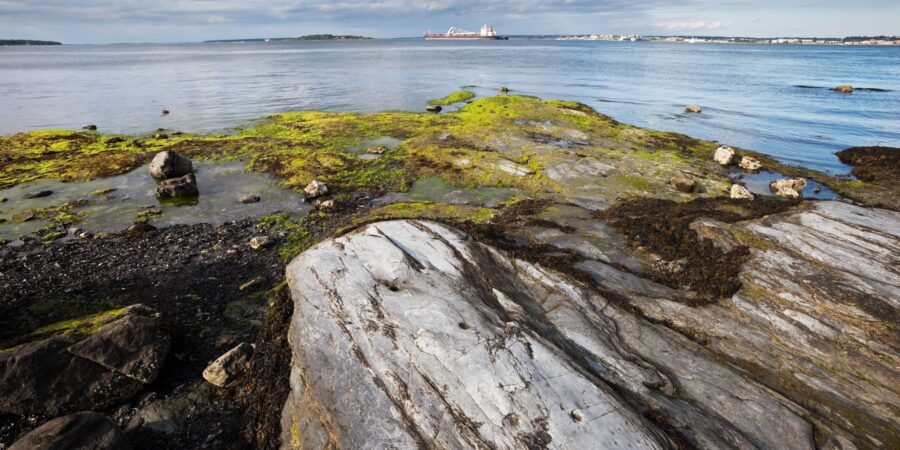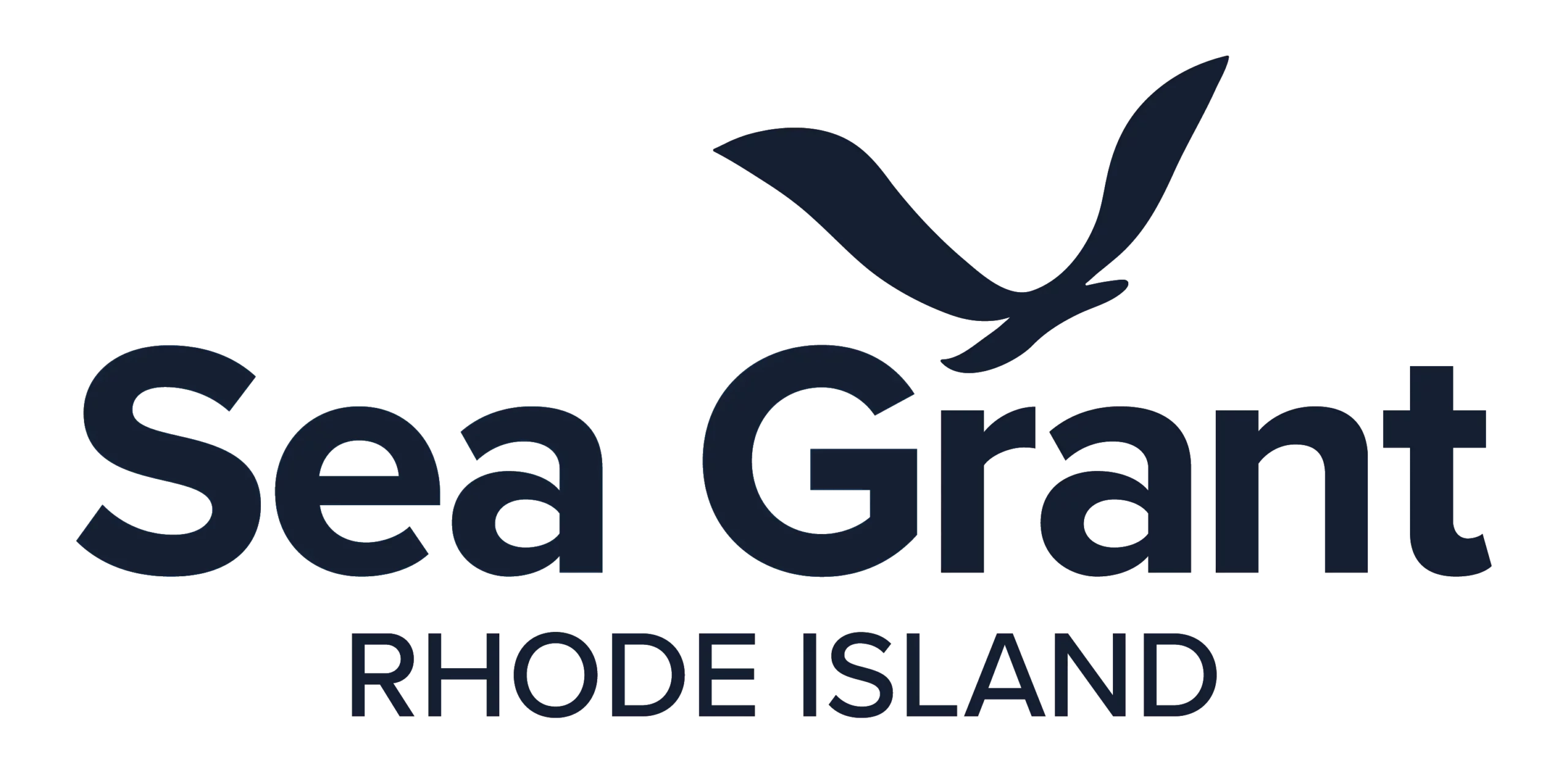New research highlights Vibrio risks in coastal seaweed habitats

Opportunistic macroalgae like sea lettuce (Ulva) are increasingly common in coastal ecosystems. New research in Narragansett Bay found that these fast-growing species may harbor higher concentrations of potentially pathogenic Vibrio bacteria.
New research supported by Rhode Island Sea Grant has found that common seaweeds found in Narragansett Bay can harbor naturally occurring bacteria that under certain conditions may pose health risks.
Researchers from Boston University and Roger Williams University examined seven types of macroalgae, or seaweed, including familiar species like sea lettuce (Ulva) and Gracilaria, which are common in coastal waters and sometimes harvested. * However, these particular species are not cultivated on Rhode Island ocean farms.
The researchers found that these wild seaweeds can host two types of Vibrio bacteria—Vibrio parahaemolyticus and Vibrio vulnificus. Both occur naturally in marine waters but can cause gastrointestinal illness or, in rare cases, serious infections, especially in people with open wounds or weakened immune systems.
To better understand potential pathways for human exposure, the team focused on sampling sites where people are likely to come into contact with these types of seaweeds along the shore.
“We focused sampling on three different sites within Narragansett Bay, all easily accessible from docks or rocks. The idea was to sample in places where people would likely be interacting with the environment,” says Alex Geisser, lead author and a Ph.D. candidate from Boston University.
Samples were collected from three locations in Narragansett Bay during summer and early fall of 2022, a time when water conditions typically favor both seaweed and Vibrio growth. Lab testing confirmed the presence of both Vibrio species on wild seaweed surfaces, and in many cases, researchers also detected genes associated with their ability to cause disease.
“This work combined traditional microbiological methods, such as manual colony counting, with molecular techniques like quantitative PCR (qPCR) to confirm species identity. We further our analysis by screening for specific pathogenic genes,” says Geisser, adding that these are the same methods used by the Food and Drug Administration (FDA) for enumerating Vibrio in oysters and applied it to macroalgae.“
Published in Frontiers in Marine Science, the study is one of the first to measure potentially harmful Vibrio bacteria living directly on wild seaweed surfaces in a temperate estuary.
“This isn’t necessarily a new issue, it’s just one we haven’t been looking for until recently. The conversation is starting to emerge, but that doesn’t mean it hasn’t been happening all along,” says co-author Dr. Robinson Fulweiler from Boston University. “Without consistent monitoring, it’s hard to say how long it’s been present.”

Macroalgae provide a structurally complex habitat that may serve as a refuge for Vibrio bacteria in Narragansett Bay. As seaweed habitats expand due to climate and nutrient shifts, scientists are calling for increased monitoring to understand the public health implications.
Notably, the highest concentrations of both pathogens were found on opportunistic, fast-growing wild seaweed species that are increasingly dominant in coastal waters influenced by warming temperatures and nutrient input. In Rhode Island, nutrients primarily come from sources like lawn fertilizers, septic systems, and wastewater discharge—all of which can fuel excessive seaweed growth. It’s a trend that Geisser notes is happening worldwide.
We need to be aware of this potential pathway for exposure.
“”Globally, shifts in ocean conditions are driving a widespread replacement of perennial, slower-growing macroalgae with more opportunistic species that grow more rapidly,” she says
Interestingly, the study found that environmental factors such as temperature and salinity were not seen as direct predictors of Vibrio abundance. Instead, the structure and growth strategy of the seaweed themselves may offer these pathogens a protective refuge.
Although finding Vibrio on coastal, wild seaweed doesn’t necessarily mean it will make people sick, the study highlights an overlooked environmental dynamic.
“We need to be aware of this potential pathway for exposure,” explains Fulweiler, emphasizing the need for more systematic research. “This study provides a call to action for monitoring [wild seaweed populations] for pathogens, and more research on the environmental conditions that help pathogenic Vibrio thrive on a variety of surfaces.”
Geisser notes that the team is finalizing a manuscript exploring how Vibrio levels differ among oysters, macroalgae, and sediment collected from the same sites. “We’re aiming to submit it by the end of the summer, so stay tuned!” she says.
Frontiers in Marine Science
Macroalgae host pathogenic Vibrio spp. in a temperate estuary
–Meredith Haas, RISG Research Communications & Digital Manager
